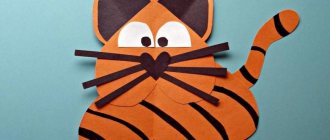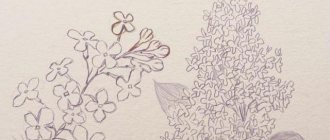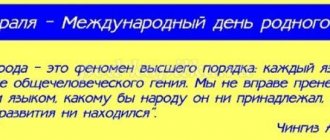Introducing preschoolers to the library
Getting to know the library for preschoolers is the discovery of a new, magical and extremely interesting world. Introduction to books begins from a very early age. Children are the most grateful and attentive listeners and active readers. Acquaintance with the library should occur in preschool age, when there is no compulsory reading. Children are often brought to the library by mothers, grandmothers, and kindergarten teachers, so the children's library, as a specialized institution, is entrusted with the mission of professionally dealing with issues of children's reading and culture. Using the resources available in the children's library, librarians create optimal conditions for cultural development, meeting the educational, communicative and other needs of children, while creating the necessary environment for the child's development through books and reading.
You need to start preparing for going to the library at home. From a conversation about books and bookcases, from playing “library” and “hospital for books.” Remember the famous children's rhyme by B. Zakhoder?
“This book made me sick:
Her brother tore her up.
I'll feel sorry for the patient:
I’ll take it and glue it together.”
Along with this quatrain, “treat books,” and at the same time talk about: - What is a cover, binding, page (leaf)? —Where are books kept at home? - What are libraries for? —Who is a librarian? — What is the difference between a book and a newspaper and magazine? — What is the difference between a bookstore and a library? Etc. The so-called preparation can be extended over a week. And at the same time, read the wonderful poems by S. Marshak “Books about books” and “How your book was printed.” V. Khodasevich has an instructive verse for children who love to chew books: “A conversation between a man and a mouse that eats his books.” In winter, it is convenient to take replacement shoes to the library, then you can stay there longer. For the first time, don't plan too much. Enrolling in the library and visiting the reading room is quite enough for a start.
Explain the rights and responsibilities of the reader and the applicable rules.
The room where you can read books is called the reading room. It's cozy, quiet and peaceful here. In this room there are a lot of not only books, but also magazines and newspapers. Guys come here to read books, look at magazines, play games. The room where books are given out to people's homes is called a subscription room. The librarian issues books to readers. All books are on shelves. The child must understand that books are not bought in the library, but are taken for temporary use. A book chosen from a huge variety can be taken only after signing up in the reader's form. After reading, the book must be returned within the required time frame, intact and intact.
When choosing books, use the help of a librarian. It will indicate the arrangement of books by subject and age groups of readers. Let your child choose his first book on his own. Unobtrusively offer your child books that you think are appropriate for the child’s age and interests. You can get interested in books that you yourself read as a child. Try to choose literature from different genres and different authors. .. Additionally, the library hosts various thematic events aimed at the development of children. Take part in competitions, quizzes, performances; children of any age really like this. To become a real reader, you need to know the rules of use
library.
How should a reader behave in a library?
-quiet
- return books on time, because other readers are waiting for them.
-Library books must be handled with care so that they can be read
as many guys as possible.
-Library books cannot be lost.
-Books taken from the shelf must be put back in their place.
• Books must not be bent.
• Do not fold book pages,
• You cannot put pencils or pens in books. What is the name of the thing that you need to use when reading books? BOOKMARK.
• You cannot write or draw in books.
• You cannot read books while eating.
Most of all, books love to be treated with care. They love cleanliness very much.
From the world by thread
All over the world, children's libraries are cultural and educational centers for children and their parents. What librarians can’t come up with to make children interested in books, love reading and come to the library more often.
In one American library, above the book lending counter there is this poster: “Read the book, your parents will be stunned!”
Germany hosts themed “Reading Nights” for teenagers. How does this happen? For example, “Night of the Vampires” will take place this month. By nine in the evening, parents bring their children to the library, the children dress up in carnival costumes of witches, vampires, and devils. The parents go home. Librarians (who are also in costumes) gather children into several groups and begin to read scary stories to them, then the children themselves tell their own made-up stories. Various games are also played, fairy tale films are shown, and pictures are drawn. Around midnight, children go to bed directly on the floor, on the carpet. Early in the morning, parents come to pick up their children, and they have breakfast together in the library cafe and discuss the past “Reading Night.”
In France, there is a practice of “street libraries”. Once a week, a “library without walls” opens in a specific place, often near a children’s playground. Librarians bring several boxes of books. As soon as they see them, the children stop playing and, of course, a library appears. Some simply look at books, others read, others listen to one of the librarians read aloud or tell something. The guys themselves tell different stories and share their impressions of what they read. The French believe that such a small “library without walls” will become a kind of bridge to a large library.
In Japan, every library visitor receives a free “Have You Read It?” book. This is a so-called “recommendation manual” for children, with drawings, games and competitions. The book has several sections: for those who are reading books for the first time, for those who have already read several books, for those who are interested in reading, etc. There are several such publications, each designed for its own age. The list of recommended books is small, but each one has an annotation and a picture.
Rules for handling the book:
1. The book should not get wet - this causes the pages to warp, the binding to swell and delaminate. When you go to the library, put the book in a bag that will protect it from rain and snow.
2. Don't read while eating. If you place a book next to a plate, the pages will get greasy stains that are impossible to clean.
3.Before you start reading a book, wrap it in paper or put on a cover.
4. The book is afraid to crumble into separate leaves. Do not throw an open book upside down, do not fold the pages. Use a bookmark.
5. If you want to draw something or write something down after reading a book, do it in an album or a special notebook.
6. Don’t throw books around - you can lose them, a dog can chew them, or a kitten can tear the pages.
Get text
Thematic day “Library Day in Kindergarten”
Today is library day.
In our modern, turbulent age,
When everyone's watching on the Internet,
Do we need these libraries?
But there is a need – no doubt about it!
The Internet doesn't solve everything!
All-Russian Library Day is celebrated on May 27. This is a holiday not only for professional librarians, but also for all people who love books and understand their huge role in the cultural and social life of society. Kindergarten teachers strive to instill in children a love of books and reading from a very early age. It is very important that the book enters the life of a little person as early as possible.
In a group, you can have a conversation on the topic “What is a library and what is it for?”, role-playing games “Library”, make baby books with children. You can visit the children’s library hall with the children, talk about the profession of a librarian, introduce the kids with different types of books and show the book depository. With preschoolers, look at a lot of books in beautiful bindings, on wonderfully decorated shelves.
You can have a conversation with children of older preschool age (5-7 years old)
Description: The conversation introduces preschool children to the world of book culture and the rules of conduct in a children's library
Goal: Introducing preschoolers to the world of book culture, raising a literate reader Objectives: 1. Develop cognitive interest in books 2. Foster the need to communicate with books 3. Develop a caring attitude towards books 4. Attract new readers to the children's library
Progress of the conversation:
Educator: Guys, today we will talk about books. What is a book? (children's answers) Educator: A book is an ancient invention of man; with its help, people wrote down and saved useful and important information. The book was kept like a treasure and passed on from generation to generation. Books meet a person from an early age and accompany him throughout his life. Many centuries ago, before the invention of paper, books were made from birch bark (birch bark), then from parchment (thin animal skin).
Ancient books were large and heavy. They took up a lot of space. Why did it take a lot of effort and expense to produce one book? Educator: Guys, what does the book tell us about? (Children's answers) Books give people a huge, tempting, interesting world. The book surprises readers with different genres. Fairy tales, stories, stories, epics, poems, nursery rhymes, proverbs, sayings. People's wisdom books are carefully preserved. Mystery:
Not a bush, but with leaves, Not a shirt, but sewn, Not a person, but a story.
Educator: Guys, what else do we know about books? Among the people, people who could read were respected and revered. The Russian people have composed many proverbs and sayings about the book.
Excursion to the library lesson plan on the world around us (middle group) on the topic
“There is a wonderful country in the world,
It's called the Library.
Adults and children come here
Because books live here.”
Summary of an excursion to the library for middle group children
Goal: to continue to acquaint children with the social facilities of the village and their purpose.
Tasks:
— Expand children’s understanding of the professions of social workers, the content and significance of their work.
— Introduce children to the profession of librarian.
— Expand your vocabulary on the topic “library.”
— To instill in children responsiveness and respect for the work of a librarian; careful handling of books.
Priority educational area: “Cognition”
Type of activity: excursion.
Preliminary work:
Reading fiction, looking at books. Conversation with children about professions.
Methodology:
(The teacher conducts a conversation with the children).
Educator: Would you like me to read you the fairy tale “Sister Fox and the Wolf”?
Children: Yes.
(The teacher tries to find a fairy tale, but does not find it and invites the children to go to the library and get this book there.)
Educator: Guys, I looked and looked for this fairy tale and didn’t find it, tell me, maybe one of you knows where we can get a book that we really want to read, but we don’t have it? (children's expected answers). How many of you know what a library is?
(Children's answers)
Educator: Guys, today we are going on an excursion to the library. A library is a house, a building where books live, it is a repository of books. There are a lot of books in the library, much more than you have at home. And if you want to read a book, but you don’t have it at home, then you can go to the library and take this book there to read it at home. When you read a book, you return it back to the library and take any other one. There is a librarian working in the library. We will also get acquainted with his work today. A library is a place where there are many books, and there we can find the book that we need.
(The teacher and children come to the library, where they are met by a librarian)
Educator: Hello! We came to visit you, we wanted to learn more about the books, how and where they are, and we also wanted to read a book called “Sister Fox and the Wolf,” but unfortunately, we didn’t have such a book, so we came to you for this fairy tale.
Librarian: Hello guys, my name is Nadezhda Aleksandrovna, I work as a librarian. Would you like me to tell you what I do here?
Children: We want.
Librarian: Come in, I’ll tell you about this fascinating profession.
(Children go to the reading room. The teacher draws the children’s attention to the fact that there are many tables and chairs here where you can sit to read something, and, if necessary, write something down. It is also beautiful and cozy here.)
Librarian: A librarian is a very important and necessary profession. Many people have home libraries. Books are on shelves and in cabinets. They are read by adults and children. They know all their books. But there are still places where there are many books. Such places are called libraries. The work of a librarian takes place in the library, among books.
(The librarian gives a tour of the library.)
Librarian: Every library has large cabinets with a large number of bookshelves - shelving. (Leads to the “Preschoolers and First-Graders” rack). It is on it that books that will be interesting (to preschoolers) are located. There are so many books, they are all different, different authors, different titles. Here children will definitely choose a book to their liking. If a person finds it difficult to choose or cannot find a specific book, he turns to a librarian for help.
Each book has its own number made up of letters and numbers - a code. Using this code you can find the book you need. Cards with the names and codes of all books are stored in catalog boxes. The librarian will look at such a card and bring you the book you need.
(The librarian shows the cards)
Librarian: You and your teachers came to the children's library. No matter how many books you have collected at home, the library has a much larger selection of books! The librarian issues books. He constantly communicates with the reader, answers his questions, and advises which book to read. This is my profession.
Educator: Books must be read quickly, returned on time, in good condition. Books must be handled very carefully. Otherwise, the book will fall into such a state, become so torn, dirty, dilapidated, that no one will be able to read it. And if it happens that the book is accidentally torn, then it must be repaired and repaired.
Librarian: Guys, do you like reading books? What is your favorite book? (children answer)
And now, guys, I’ll tell you some riddles.
Be careful!
1. Without language, without voice, but the book will tell you everything.
2. Not a bush, but with leaves, not a shirt, but sewn, not a person, but talking (a book).
3. We stand side by side on the shelf, there are a lot of us - thick, thin,
We help children become reasonable people.
The kids carry us to class, but the lazy guy doesn’t like us (books).
Well done! All these riddles were about books.
Educator: Guys, what new words did you learn today? (Guys repeat)
Well done boys! You behaved so well, and most importantly, did you remember how to behave in the library, in the reading room? (Children's answers).
Librarian: And now we will find the book you came to me for. Do you want to read the fairy tale “Sister Fox and the Wolf”?
Children: Yes.
Librarian: Then come with me. (The librarian looks for the book he needs and writes it down on the group card.)
(The teacher and children thank Nadezhda Alexandrovna for the book and say goodbye).
Educator: Thank you, Nadezhda Aleksandrovna, for the interesting story about your wonderful profession, and the guys and I will go read a fairy tale. Goodbye!
Librarian: Come to the library with your moms and dads, I will be very glad to see you, goodbye guys.




